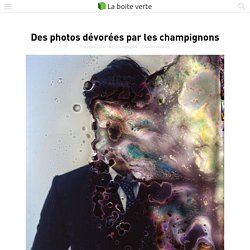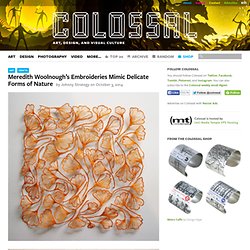

Cite This For Me - Automatic bibliography generator. WikipediaVision (beta) /chromeexperiments. Photos: The Luxurious Boeing 314 Clipper. Racing my Macaw Parrot at Kolimbithres-Paros. Repetition Is Cool To Watch. Happylander. The River of Secrets. Gentle Brain. Girl Talk - All Day. How to Peel a Kiwi or Mango. Le Louvre en 1953. Le magazine LIFE a envoyé en 1953 le photographe Dmitri Kessel à Paris pour photographier le musée du Louvre dont un grand nombre de pièces venaient d’être réorganisées et restaurées.

[Via] Des photos dévorées par les champignons. Le photographe et microbiologiste sud-coréen Seung-Hwan OH a créé cette série de photos en cultivant des champignons sur du film argentique avant de prendre des photos avec de façon à ce que les champignons dévorent une partie des images entre la prise de vue et le développement.

[Via] Medieval Book Historian Erik Kwakkel Discovers and Catalogs 800-Year-Old Doodles in Some of the World’s Oldest Books. Doodle by bored medieval school boy.

A 15th-century doodle in the lower margin of a manuscript containing Juvenal’s Satires, a popular classical text used to teach young children about morals. Photo: Carpentras, Bibliothèque municipale, MS 368. For the past few years, medieval book historian Erik Kwakkel has been poring over some of the world’s oldest books and manuscripts at Leiden University, The Netherlands, as part of his ongoing research on pen trials.
Pen trials are small sketches, doodles, and practice strokes a medieval scribe would make while testing the ink flow of a pen or quill. They usually involve funny faces, letter strokes, random lines, or geometric shapes and generally appear in the back of the book where a few blank pages could be found. Meredith Woolnough’s Embroideries Mimic Delicate Forms of Nature. Australian artist Meredith Woolnough creates elaborate embroideries that mimic delicate forms of nature like leaves and coral.

“I have been collecting skeletonized leaves for as long as I can remember,” says the artist, whose “traceries” capture the beauty and fragility of nature. Woolnough uses a special embroidery technique that involves a domestic sewing machine and a base cloth that dissolves in water after the piece is complete leaving just the skeleton.